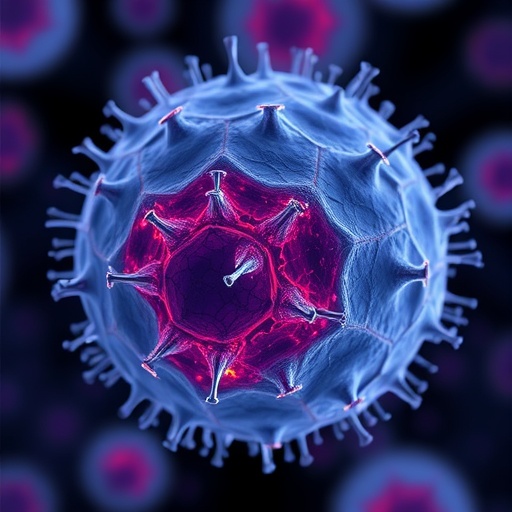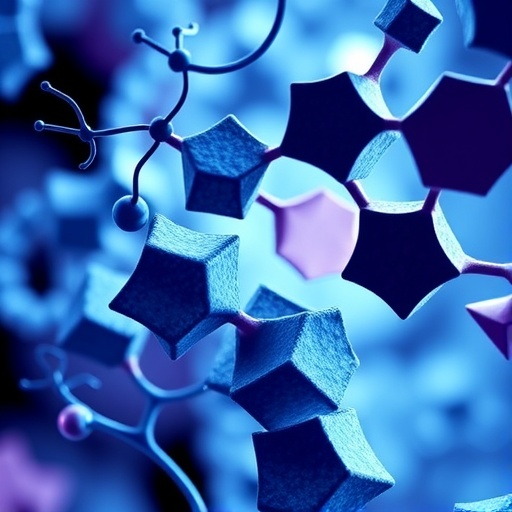In the intricate battleground of cancer and the immune system, a pioneering approach developed by researchers at Purdue University is shedding new light on the elusive biochemical processes that undermine immune defenses against tumors. Led by Professor W. Andy Tao and his team, this groundbreaking method offers unprecedented insight into how cancer cells manipulate the immune response by utilizing extracellular vesicles (EVs) and RNA-binding proteins, potentially altering the landscape of cancer immunotherapy research.
Traditionally, the immune system’s capacity to identify and destroy malignant cells has been a central focus in oncology. However, certain biochemical interactions at the cellular level can blunt this capacity, enabling cancer to evade immune destruction. Central to this phenomenon are extracellular vesicles—tiny membrane-bound packages released from cells that shuttle molecular cargo, including RNA and proteins, between cells. The Purdue team’s novel approach leverages these vesicles to study their influence on immune function with unparalleled precision.
Extracellular vesicles play a pivotal role in intercellular communication by transporting RNA molecules and RNA-binding proteins that modulate the activity of recipient cells. Despite recognition of their importance, previous methodologies faced significant challenges in selectively profiling the RNA-associated proteome delivered by EVs to immune cells. The new technique bridges this gap by introducing orthogonal labeling strategies that allow researchers to map these critical interactions comprehensively.
The method hinges on a dual-labeling protocol beginning with the incorporation of a synthetic organic molecule that labels RNA in donor tumor cells. This molecule is sensitive to ultraviolet (UV) light, which, when applied, induces cross-linking between RNA and proximate proteins, effectively “freezing” their interactions in place. This UV-induced covalent bonding enables identification of proteins that directly interact with the labeled RNA, a crucial step in decoding the molecular dialogue facilitated by EVs.
Once the labeled EVs are taken up by immune cells—cells responsible for orchestrating defense against malignancies—the same UV cross-linking is applied within the recipient cellular environment. This step ensures that only proteins interacting with the RNA cargo inside the immune cells are captured and analyzed. Simultaneously, isotopic labeling differentiates proteins originally synthesized by immune cells from those introduced through EVs, allowing for accurate attribution of molecular origins. This sophisticated labeling orthogonality secures high specificity in detecting RNA-protein interactions within the complex cellular milieu.
The researchers validated their approach using Jurkat T cells, a widely utilized model for studying leukemia. They tracked how EV-derived RNA-binding proteins interact within these immune cells, illustrating how cancer-derived extracellular vesicles can potentially modulate immune functions. Extending their investigations, experiments were also conducted on immune cells infected with human intrahepatic cholangiocarcinoma—a rare liver cancer notorious for its resistance to immunotherapy—further underscoring the versatility and efficacy of the method.
“Increasingly, the scientific community recognizes the significant regulatory roles EVs play in immuno-oncology,” explains Professor Tao. “Our method provides a robust framework for exploring these vesicle-mediated interactions at a proteomic scale while maintaining low false discovery rates essential for high-throughput studies.” Such rigor in methodology ensures reliability when dealing with the vast complexity of protein-RNA networks within cells.
This technological advance resonates with broader scientific efforts to harness RNA biology within therapeutic contexts. RNA-binding proteins are not mere facilitators of cellular function; they are gatekeepers orchestrating complex pathways that can influence cell fate and behavior. Profiling these proteins in the context of EV-mediated delivery highlights unexplored therapeutic targets, potentially paving the path for novel interventions that could augment or restore immune competence against cancers.
Furthermore, integrating this approach within Purdue’s One Health initiative demonstrates its interdisciplinary relevance, intersecting human health, animal biology, and environmental science. As extracellular vesicles and RNA-mediated communication span across biological kingdoms, insights gained here may inform diverse fields ranging from infectious disease to environmental toxin responses.
Funded by prominent institutions including the National Science Foundation and the National Institutes of Health, this research underscores the importance of innovative, mechanistic studies in advancing biomedical knowledge and treatment strategies. The detailed findings, published in the Journal of the American Chemical Society, mark a significant step towards unraveling the intricate molecular crosstalk that shapes immune responses in cancer.
Looking forward, this method stands to accelerate discoveries in cancer immunobiology, providing tools to dissect the molecular pathways through which tumors subvert immune defenses. By elucidating the landscape of extracellular vesicle cargo and its implications on recipient immune cells, researchers can better strategize immunotherapies tailored to overcome tumor resistance mechanisms and improve patient outcomes.
In sum, the Purdue team’s breakthrough not only expands the proteomic toolkit but also advances our understanding of the subcellular machinations enabling cancer’s stealth. As immunotherapy continues to revolutionize cancer treatment, innovations like this will be instrumental in fine-tuning therapeutic precision, ultimately contributing to the global endeavor to defeat cancer.
Subject of Research: Biochemical interactions involving extracellular vesicles and RNA-binding proteins that influence immune cell function in cancer.
Article Title: Proteomic Tracking Extracellular Vesicle RNA Interactors in Recipient Immune Cells through Orthogonal Labelings
News Publication Date: August 1, 2025
Web References:
Purdue Department of Biochemistry – https://ag.purdue.edu/department/biochem/index.html
Purdue Institute for Cancer Research – https://www.purdue.edu/cancer-research/index.php
Journal of the American Chemical Society article – http://dx.doi.org/10.1021/jacs.5c07631
Purdue One Health Initiative – https://www.purdue.edu/onehealth/
References:
Tao, W. A., et al. (2025). Proteomic Tracking Extracellular Vesicle RNA Interactors in Recipient Immune Cells through Orthogonal Labelings. Journal of the American Chemical Society, DOI:10.1021/jacs.5c07631
Image Credits: Purdue University
Keywords: Cancer, Cancer immunotherapy, Immunology, Proteomes, Cell biology, Cell lines, Cancer cells, Leukemia, Liver tumors
Tags: biochemical interactions in oncologycancer cell communicationcancer immunotherapy advancementsextracellular vesicles in immunotherapyimmune response manipulation by cancerimmune system suppression mechanismsinnovative cancer research techniquesintercellular communication in tumorsPurdue University cancer studyRNA profiling in immune cellsRNA-binding proteins in cancertumor evasion strategies





